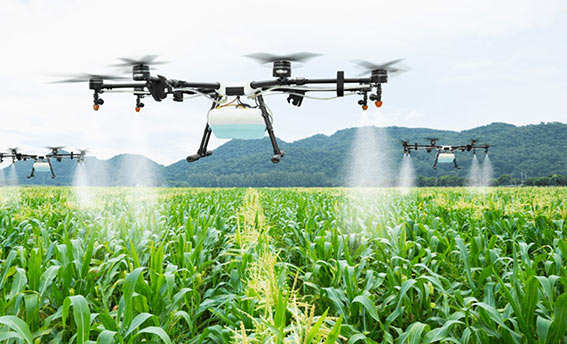In recent years, the marriage of technology and agriculture has led to a transformative wave of innovations aimed at increasing efficiency, yield, and sustainability in farming practices. One of the most promising developments in this field is the utilization of drones equipped with Time-of-Flight (ToF) sensors. These advanced devices are revolutionizing the way farmers manage their crops, offering unprecedented insights and capabilities that enhance productivity while minimizing environmental impact. In this article, we explore the remarkable benefits of ToF sensor-equipped drones in agriculture.
Understanding ToF Sensors:
Time-of-Flight sensors, commonly known as ToF sensors, are a cutting-edge technology used to measure the time it takes for light or another electromagnetic wave to travel a certain distance. This technology is utilized in various fields, including robotics, automotive safety systems, and, most notably, agriculture. In the context of agriculture, ToF sensors are mounted on drones to enable accurate and real-time data collection from crops and farmland.

Benefits for Agriculture:
Precision Crop Monitoring: ToF sensor-equipped drones offer unparalleled precision in crop monitoring. These sensors can accurately measure the distance between the drone and the crops, enabling the creation of detailed 3D maps of the fields. This data can reveal valuable insights into crop health, growth patterns, and potential problem areas, helping farmers make informed decisions about irrigation, fertilization, and pest control.
Optimized Irrigation: Efficient water usage is a critical aspect of sustainable agriculture. ToF sensors can identify variations in soil moisture levels, allowing farmers to tailor irrigation practices to the specific needs of different areas within a field. This precision minimizes water wastage and reduces the risk of overwatering, which can lead to soil degradation and increased operating costs.
Early Pest and Disease Detection: Timely detection of pests and diseases is crucial for preventing their spread and minimizing crop losses. ToF sensors can identify subtle changes in plant height and density, indicating the presence of unwanted invaders or pathogens. By identifying these issues early on, farmers can take targeted action to mitigate the damage and protect their crops.
Efficient Fertilization: ToF-equipped drones aid in optimizing fertilization practices by assessing the nutrient levels of the soil. By generating accurate topographical maps of the field, these sensors help farmers identify nutrient-deficient areas. This data-driven approach ensures that fertilizers are applied only where necessary, reducing costs and minimizing environmental impact.
Yield Estimation: Accurate yield estimation is essential for planning harvest logistics and predicting revenue. ToF sensors can assist in this regard by providing precise measurements of plant height and density. These measurements, when combined with other data points, enable farmers to estimate yields more accurately, allowing for better-informed marketing and distribution decisions.
Reduced Environmental Impact: The ability to target interventions based on data-driven insights helps minimize the use of pesticides, fertilizers, and water. This reduction in input usage not only lowers costs for farmers but also contributes to a more sustainable and environmentally friendly approach to agriculture.
Time and Labor Savings: Traditional manual methods of crop monitoring, disease detection, and yield estimation are time-consuming and labor-intensive. ToF sensor-equipped drones automate these processes, significantly reducing the time and effort required for routine farm management tasks.
Incorporating ToF sensor-equipped drones into agricultural practices is a testament to the potential of technology to revolutionize age-old industries. The ability to gather accurate, real-time data about crop health, soil conditions, and other vital parameters is a game-changer for farmers seeking to increase efficiency, sustainability, and profitability. As this technology continues to advance, we can expect even more sophisticated applications that will further elevate the role of drones with ToF sensors in shaping the future of agriculture.
